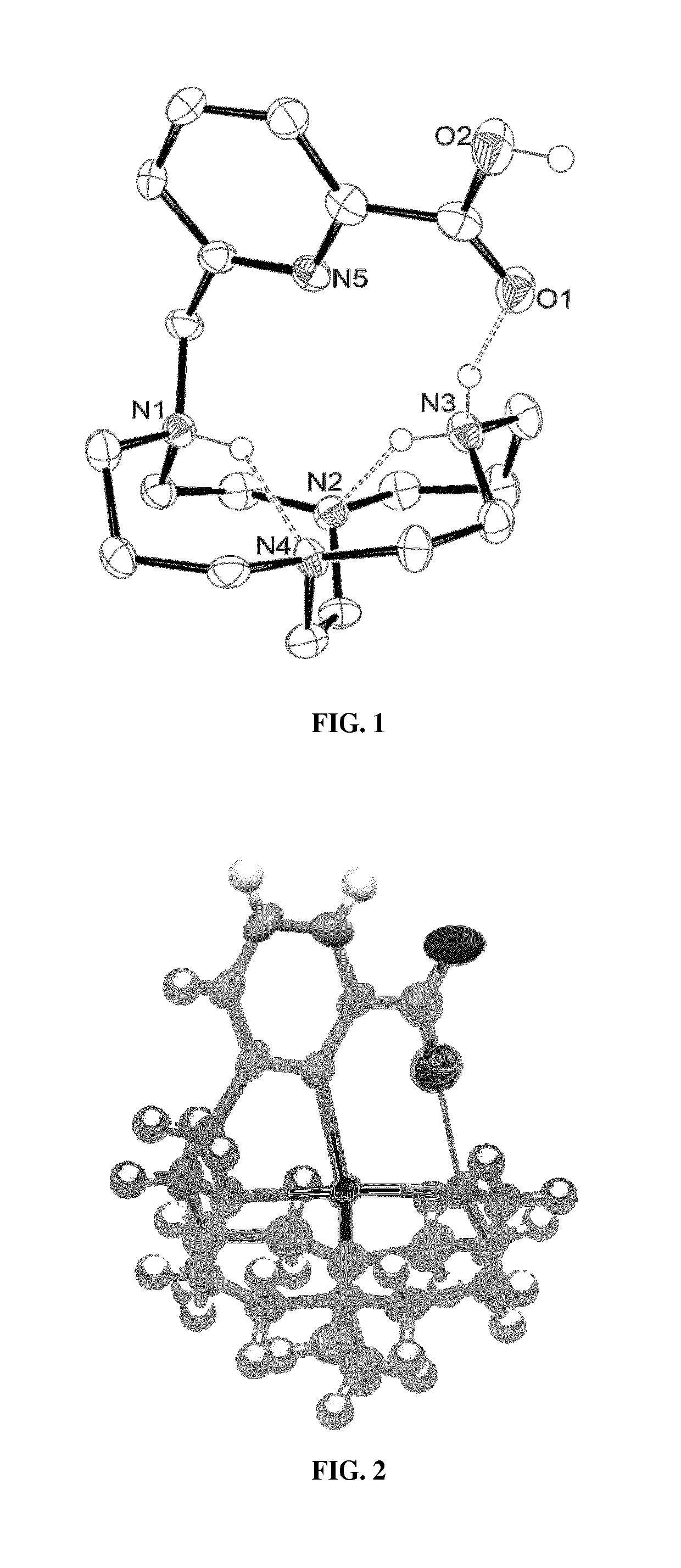Picolinate cross-bridged cyclams, chelates with metallic cations and use thereof
a cross-bridged cyclam and cyclam derivative technology, applied in the direction of peptides, drug compositions, therapeutics, etc., can solve the problems of copper-dota chelates copper-dota chelates and cyclam derivatives of cyclams are far from meeting the above specifications. , to prevent possible metal transchelation, good thermodynamic stability, good water solubility
- Summary
- Abstract
- Description
- Claims
- Application Information
AI Technical Summary
Benefits of technology
Problems solved by technology
Method used
Image
Examples
examples
[0250]The present invention will be better understood with reference to the following examples. These examples are intended to representative of specific embodiments of the invention, and are not intended as limiting the scope of the invention.
I. Materials and Methods
[0251]Reagents were purchased from ACROS Organics and from Aldrich Chemical Co. Cross-bridged cyclam i-a was purchased from CheMatech (Dijon, France) and 6-chloromethyl-pyridine-2-carboxylic acid methyl ester ii-a was synthesized as previously described (Mato-Iglesias, M. Et al. Inorg. Chem. 2008, 47, 7840-7851). Elemental analyses were performed at the Service de Microanalyse, CNRS, 69360 Solaize, France. NMR and MALDI mass spectra were recorded at the “Services communs” of the University of Brest. 1H and 13C NMR spectra were recorded with Bruker Avance 400 (400 MHz) spectrometer. MALDI mass spectra were recorded with an Autoflex MALDI TOF III smartbeam spectrometer.
[0252]When used hereafter, “ca.” stands for “calculat...
PUM
| Property | Measurement | Unit |
|---|---|---|
| pH | aaaaa | aaaaa |
| pH | aaaaa | aaaaa |
| temperature | aaaaa | aaaaa |
Abstract
Description
Claims
Application Information
 Login to View More
Login to View More - Generate Ideas
- Intellectual Property
- Life Sciences
- Materials
- Tech Scout
- Unparalleled Data Quality
- Higher Quality Content
- 60% Fewer Hallucinations
Browse by: Latest US Patents, China's latest patents, Technical Efficacy Thesaurus, Application Domain, Technology Topic, Popular Technical Reports.
© 2025 PatSnap. All rights reserved.Legal|Privacy policy|Modern Slavery Act Transparency Statement|Sitemap|About US| Contact US: help@patsnap.com



